Ultimate Guide to Everything IoT & How to Protect Them in 2025
The explosion of IoT will continue throughout 2025 and beyond, changing everything we do and altering our lives for the better.
The term “Internet of Things” (IoT) can be easily misunderstood. The best way to define and describe IoT is the operation of everyday objects via the internet through computing devices embedded inside them. These “everyday IoT objects” can include kitchen appliances, lighting, heating units, security systems, and much more.
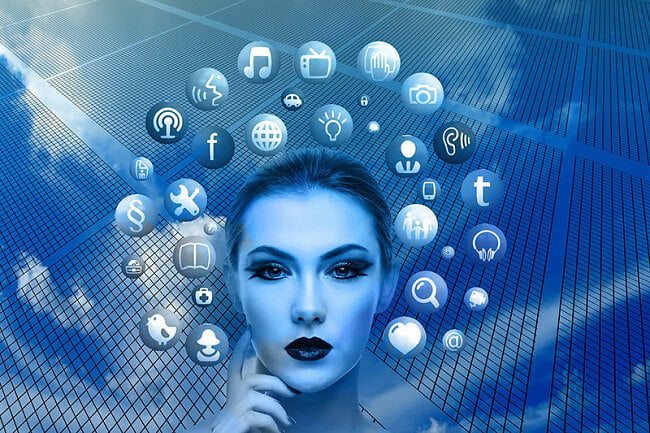
Although we’ve laid out a basic definition of the term “IoT,” it’s important to keep in mind that this will evolve as the technology becomes more and more sophisticated over time.
Technological developments like artificial intelligence (AI) and other advanced software embedded within physical devices, vehicles, and even buildings, not only enable you to interact with these objects but also allow the objects to operate on their own or with each other.
In 2023, it was estimated that over 15 billion devices were connected to the internet worldwide. As technology keeps advancing at a rapid rate, the IoT explosion looks set to continue throughout 2025 and beyond, potentially impacting many aspects of modern life. Forecasts predict that the total number of IoT devices will double by 2030, reaching over 30 billion devices and ushering in lifestyle changes that many are unable to fathom.
So what exactly is the Internet of Things? How does it impact our daily lives? And does it pose any serious security threats? Let’s take a closer look.
Quick navigation:
Editor’s Note: We value our relationship with our readers, and we strive to earn your trust through transparency and integrity. We are in the same ownership group as some of the industry-leading products reviewed on this site: ExpressVPN, Cyberghost, Private Internet Access, and Intego. However, this does not affect our review process, as we adhere to a strict testing methodology.
1 IoT Explained
As we noted above, IoT involves various types of smart devices being told what to do or communicating with each other. This takes place through network connectivity; wireless in most cases.
With IoT becoming a huge part of our everyday lives, people are beginning to understand it and they’re getting on board. Devices are getting “smarter,” and everything from lights, thermostats, and refrigerators, to coffee machines, cars, and TVs, are all linking together to enhance our existence.
2 IoT Components
The IoT is a complex structure made up of various elements like sensors and actuators. Confused? We’re here to explain exactly what goes on.
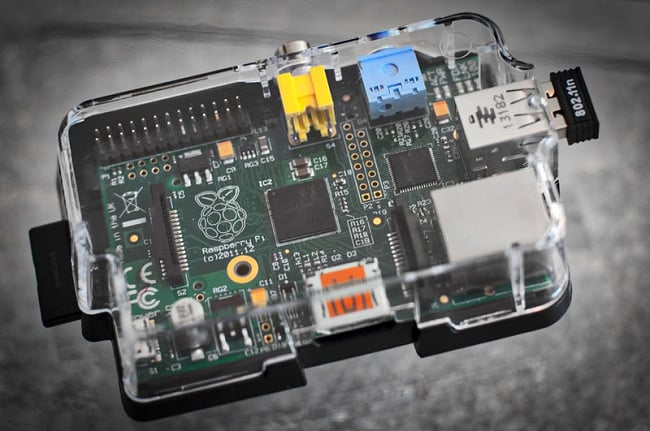
IoT isn’t just one technology but a combination of various deeply connected technologies. Everything IoT starts with a sensor and signal that’s carried across an internet connection. Then an actuator makes the smart “magic” happen. We’ll take a closer look at each of these concepts in more detail below.
- Sensors to Actuators
- The Network
- Apps, platforms and services
Sensors to Actuators
IoT objects are mostly low cost, wireless devices that weren’t initially built to be “smart,” but have developed into smart devices over time.
Sensors – like thermostats; pressure, humidity, and speed sensors; proximity detectors; and radio frequency identification (RFID) tags – attached to the objects continuously collect data from the environment and then transmit it to the next layer: actuators.
Actuators are the switch that carries out the commands on a device.
In order to protect IoT devices, it’s important to keep the sensors and actuators safe from potential threats such as sensor tampering.
The Network
The standard network of communication in IoT is Wi-Fi internet, but most modern smart devices and sensors can also be connected through other low-powered networks like Bluetooth, Z-wave, ZigBee, or LoRAWAN. Each of these networks has its own benefits and drawbacks related to data transfer rate and overall efficiency.
IoT network development is still ongoing. The broad aim is to improve technology while increasing device battery life as well as efficiency. One of the latest protocols added is 6LoWPAN, which is IPv6 (the most recent internet protocol version) over Low Power Wireless Personal Area Networks. The technology has been adapted by many companies and is now being used to ensure energy-efficient data transmission in IoT networks. This further emphasizes the importance of protecting IoT networks from attack risks.
A key consideration in protecting IoT devices is setting the correct network security protocols to ensure they are not vulnerable to breaches.
Apps, platforms and services
IoT Apps, platforms, and services are the middleware used to connect IoT components. They collect and distribute data, convert between protocols, and store and analyze data.
These services are mostly cloud-based and are responsible for processing data before turning it into useful information. An example of a commonly used service in IoT is Amazon Web Service (AWS). Others include Microsoft Azure, IBM Watson Bluemix, and ThingWrox.
Understanding how to protect IoT devices is important to help keep the data they collect secure.
3 The History of IoT

IoT may have gained a lot of attention in recent years, but it is not a new concept. One of the first examples of IoT was a Coca-Cola machine developed in the 1980s at Pennsylvania’s Carnegie Mellon University in the US.
The device was an internet-connected refrigerator. One could check to see whether there was a drink available, and if it was cold, without needing to open the fridge. Back then, the idea was just referred to as “embedded internet” or “pervasive computing.”
“Internet of Things” is born
The term “Internet of Things” wasn’t officially coined until 1999 when Kevin Ashton, co-founder of the Massachusetts Institute of Technology’s Auto-ID Center, used the term to describe work he was doing for Procter & Gamble.
At that time, Ashton was working in a supply chain organization with a focus on RFID technology. He used the phrase “Internet of Things” to describe a system where the internet is connected to the world via widespread sensors, including RFID.
Ashton decided to use the term “Internet of Things” because of the growth in popularity of the internet in the late ’90s. The concept was born, but it didn’t get much attention for the next 10 years.
IoT Takes off
The big break for IoT came in 2008 when the Internet Protocol for Smart Objects (IPSO) Alliance brought together industry players to promote device connectivity. Following this, firms quickly started investing in everything IoT.
In 2010, the Chinese government announced that it had seen the potential in IoT and that it would make it a strategic priority in their 5-year plan. The following year, Gartner, the world’s leading research and advisory company, included the Internet of Things in its list of emerging phenomena.
In 2012, “Internet of Things,” was the theme of Europe’s biggest tech conference, LeWeb. By this time, the term Internet of Things had become popular, and magazines like Forbes, Wired, and Fast Company had started using it in their publications.
The following year International Data Corporation (IDC) projected that IoT technology and services would “generate global revenues of $4.8 trillion in 2012 and $8.9 trillion by 2020, growing at a compound annual rate (CAGR) of 7.9%.”
This rapid growth rate also fired new discussions on how to protect IoT devices to ensure that growth never came at the expense of digital security.
In 2014, the term Internet of Things reached mass market awareness after Google announced that it would buy Nest, an American manufacturer of smart home products, at a price of $3.2bn.
From there, IoT began to transform our way of living and it has since brought us many benefits, from energy savings to healthcare and business growth.
Today, you can see the applications of IoT almost everywhere in everyday life, from the smartwatch measuring your vitals on your wrist to your voice- and video-enabled doorbell that helps you monitor when your latest online orders are being delivered.
4 Some IoT Application Areas (Impact of IoT)
Statistics show that, in 2024, IoT devices are primarily used for asset tracking, predictive maintenance, condition monitoring, quality control, and supply chain management. These applications are driving significant improvements in operational efficiency, safety, and productivity across industries like construction, healthcare, transport, manufacturing, and energy.
It’s expected that IoT will continue to grow exponentially and give rise to new markets around the globe. Here are some of the areas that have already been transformed by this revolutionary concept:
IoT at Home
The Internet of Things has been expanding in every area, but the highest growth sector is IoT home. According to a recent study by Intel, 71% of the people interviewed expect to see at least one smart-home device in every home by 2025. Another 68% are confident that smart homes will become as common as smartphones within the next decade. This rapid rate of adoption highlights why it’s crucial to understand how to protect IoT devices within our homes.
An example of IoT at home can be seen in smart lights and thermostats that can be controlled remotely via an app. Another good example is Amazon’s dash buttons, which are Wi-Fi connected devices that allow you to re-order your favorite products at the press of a button. Dash Replenishment Service (DRS) takes this a step further and enables your connected devices to automatically order the products when they sense that supplies are running low.
Smart Cities
Cities around the world are leveraging the growth of IoT to improve life and service delivery, as well as cut down costs to maximize revenue.
According to a study by Juniper Research, smart cities can significantly reduce time spent in traffic to such an extent that they save every driver approximately 33 hours annually.
Additionally, smart city technologies that enable efficient traffic management to reduce congestion and improve safety on the roads are forecast to provide citywide savings of $277 billion by 2025.

Barcelona was one of the first cities to invest in IoT. It started to deploy responsive technologies as early as 2012. Like other smart cities, Barcelona began using IoT in areas like public transport, street lighting, parking, water, energy, and waste management.
Sensors have been affixed to the asphalt in parking bays to help drivers find open spaces, saving both energy and time. These sensors can also collect statistics that help the city maximize on parking income.
The lighting system in Barcelona has also been updated to preserve energy and collect various statistics about air quality, traffic, and noise. Street lights have been programmed to turn on only when they sense when pedestrians are nearby. Other sensors can even detect accidents and send the information to authorities who can then take action.
In waste management, smart bins monitor waste levels to optimize collection routes. This helps the municipality reduce the costs of checking every bin on every route. Other advanced bins can even sense hazardous or offensive water material.
Industrial IoT
Industrial Internet of Things (IIoT) is growing rapidly. It currently accounts for the biggest chunk of IoT spending and business management consultancy. Accenture estimates that IIoT could add $14.2 trillion to the global economy by 2030.
IIoT is mostly used in manufacturing and it focuses on the use of cyber-physical systems to monitor and control factory processes, as well as enable informed decision-making.
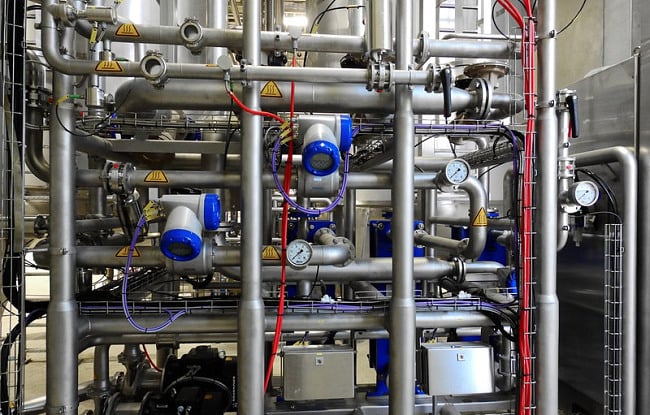
One of the most important uses of IIoT is minimizing energy consumption, which is usually the largest expense for manufacturing firms.
Energy bills only show the total power consumed within the factory, which makes it difficult to identify inefficient machines. This is where IIot comes in. It can help manufacturers collect and analyze data at the device level, enabling them to identify and fix underperforming equipment.
Another huge benefit of everything IoT in the manufacturing industry is predictive maintenance. Without IoT, companies perform maintenance either at regular intervals or based on a machine’s age or the manufacturer’s recommendations. This creates inefficiencies that can increase costs.
With IoT, sensors monitor the various machines and report on their condition. This saves time, labor, and resources by decreasing downtime and improving efficiencies in the manufacturing process.
Agriculture
IoT has greatly improved efficiencies in both crop and livestock management. Sensors designed for agriculture can collect data about soil quality, weather conditions, crop progress, and cattle health. This data can then be used to optimize planting, irrigation, and inoculations, and predict the potential output of a particular crop or herd.
By giving farmers more control over the entire process and introducing automation into processes like fertilizing, irrigation, and pest control, IoT can also help to manage costs and reduce waste. Thanks to IoT in agriculture, farmers can now increase production and maximize profit.
However, the move toward a data-driven approach to agriculture, and the importance of this sector in supporting the population, means that additional measures must be taken to protect IoT devices and ensure the accuracy of the information being received.
IoT in Health
The use of IoT in healthcare has produced unparalleled benefits, which have improved the quality and efficiency of treatments and generally improved the health of patients.
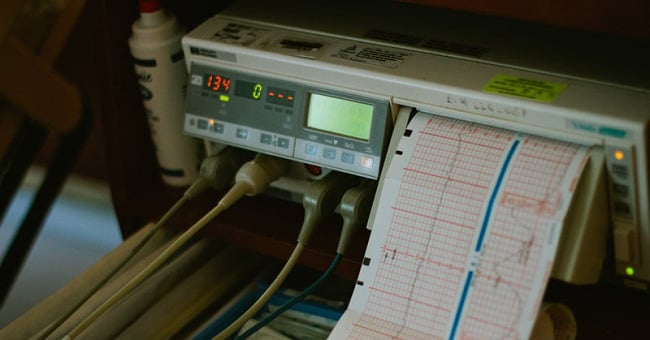
Real-time monitoring devices have saved many lives by providing advance alerts of instances where a patient may be in danger of preventable incidents like heart attacks or diabetic comas.
Hospitals with IoT connected devices can remotely monitor a patient’s health using data collected by medical devices, like heart monitors and insulin pumps. This way, they can more easily catch early signs of complications and take preventive action.
The data collected in normal situations is also very useful to health officials. It can be used in advising patients about steps that may need to be taken to improve their health or prevent potential future health issues.
5 Some Popular IoT Devices
Below are some of the most popular IoT devices that are found in the modern home and used daily.
Amazon Echo
The Amazon Echo is a hands-free speaker from Amazon that can be controlled with just your voice. The smart device connects to Alexa, Amazon’s voice-controlled intelligent personal assistant.
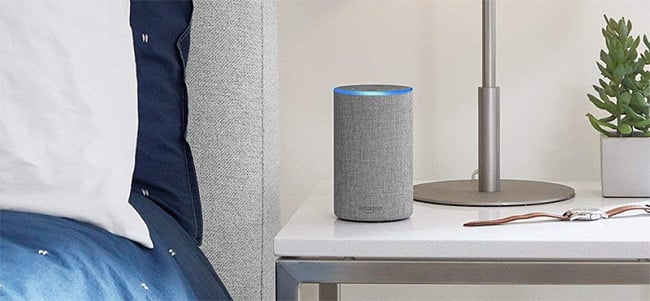
Ring
Ring lets you put a virtual ‘ring’ around your home using interconnected surveillance cameras. You can monitor your house using your smartphone, tablet, or PC.
The Ring ecosystem includes a video doorbell with a wide-angle lens, a built-in microphone, and a speaker, as well as automatic security lights and cameras that can be placed in and around your home.
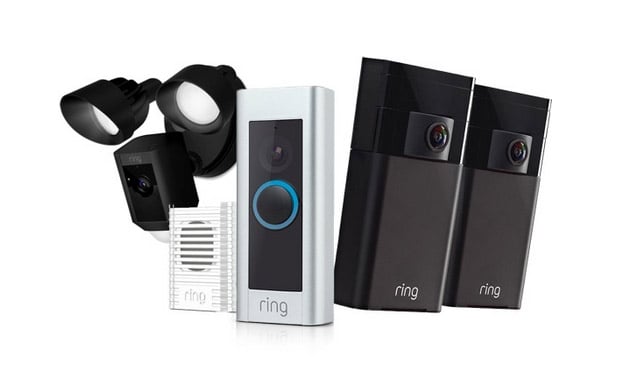
Nest Thermostat
The Nest Thermostat is the most popular heating and cooling IoT device. The device can quickly learn your schedule and then automatically adjust temperatures based on your routines and preferences. For example, Nest can learn your sleeping patterns and set the temperature to your preferred levels at the time you’re usually getting ready to go to bed. Plus, you can monitor your power consumption stats using your smartphone.
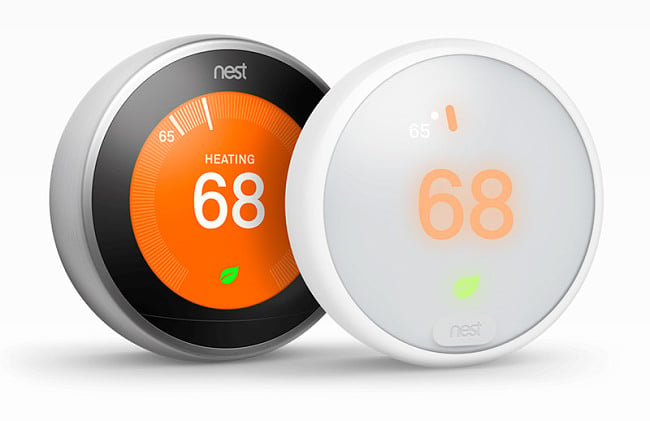
Wink Hub and Philips Hue
The Philips Hue was the first product to leverage the power of IoT into home lighting. It has color-changing bulbs that can be controlled via an app.
Wink is another light-based IoT device. You can use it to program exterior lights to switch on or off, or even dim based on the level of sunlight outside.
Both of these technologies can help you save energy by enabling you to automate and optimize electric light usage in your home.
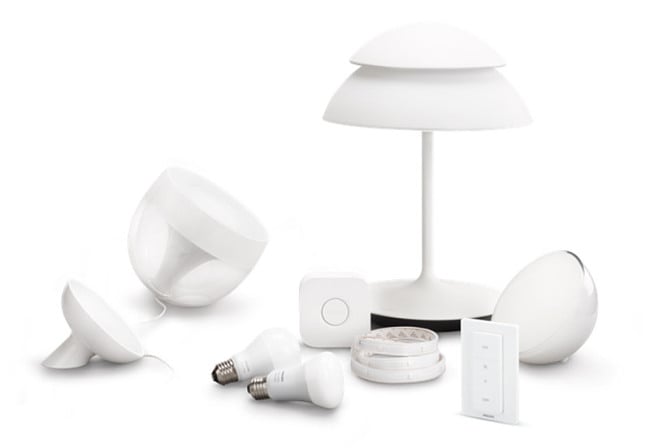
Wearables
Wearables have become very popular, with Apple, Fitbit, and Garmin’s advanced smartwatches and fitness trackers positioning these companies as leaders in the market.
Smart watches can be used to receive calls and text messages or even play music without the need to take out your smartphone. Health-oriented wearables can take biometric measurements (e.g. perspiration levels, body temperature, and heart rate) and your exercise.
This data is stored, analyzed, and monitored in a companion app on your smartphone and can be used to provide an early indication of a potential illness or other health issue.
6 IoT and Data Security
The industry with the most data security concerns is the one closest to home.
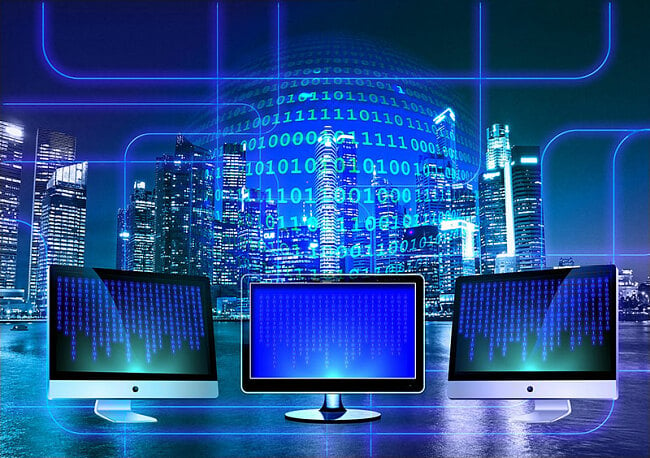
Global forecasts predict that there will be 31.7 billion IoT-connected devices by 2030. This represents nearly double the 17.8 billion devices that were in circulation in 2024.
This number includes various smart home appliances (e.g. washers, dryers, and refrigerators), smart home safety and security systems (e.g. cameras, monitors, sensors, and alarms), and smart home energy devices like smart thermostats and lighting.
Collecting Data in Your Home
Amazon Alexa is now available on over 100 million Amazon devices and third-party device manufacturers. Google Home, Siri, and other AI assistants have also rapidly increased in popularity over the past few years.
The growth of everything IoT at home has loads of positives, but there’s one aspect of IoT that remains a challenge: data collection. According to FTC, about 10,000 smart homes produce over 150 million data points in a single day – that’s a lot of data about who we are and what we’re doing in our homes.
While most of this data is intended to help the businesses that design our IoT devices, it can also be used by malicious groups. Concerns have also been raised about the privacy and security of users as these devices could potentially be used to spy on you.
Voice assistants work by listening to commands and therefore pose a variety of data threats:
- Microphones are always in listening mode.
- A device can’t tell the difference between multiple voices – a person can “fake” being the owner.
- Audio recordings are always uploaded to cloud servers; this puts your data at risk in case of a cyberattack.
- The device owner’s location and preferences are used to personalize searches and target advertising.
- Data from your recordings might be collected for subsequent analysis without your permission or consent.
- Service providers can share user’s personal data with third parties without permission or consent.
The huge number of potential entry points to these devices also present opportunities for bad actors to hack and enter a system to steal a user’s personal information or to cause mischief using a connected device. This highlights the importance of taking steps to protect IoT devices against potential attacks.
7 Securing your Home data
Whatever IoT device you use, it’s bound to collect your data. Different IoT devices pose different types of threats, so the only way to ensure security for your entire home is to protect IoT devices and encrypt your data using a VPN.
A VPN acts like a blanket over your home data, keeping it safe and contained. Using a VPN that employs AES 256-bit encryption, like ExpressVPN, will ensure your security and privacy at all times. Express VPN encrypts your traffic and securely tunnels it to a server of your choice. This way, the data that passes across your connection becomes unintelligible so that no-one outside of the VPN tunnel can use it.
We recommend using ExpressVPN to protect your IoT devices. It offers solid security protocols and won’t log any of your data.
However, be aware that many IoT devices won’t natively support the installation of VPNs. The best way to ensure that even those devices are protected is by using a router-based VPN like ExpressVPN.
*Editor’s Note: Transparency is one of our core values at WizCase, so you should know we are in the same ownership group as ExpressVPN. However, this does not affect our review process, as we adhere to a strict testing methodology.
Final thought
IoT has demonstrated exponential growth over the years that’s promised to continue throughout 2024 and beyond. Connectivity of everyday objects brings so many benefits, but so many security concerns at the same time.
By using a secure and reliable VPN like ExpressVPN, you will have that extra layer of security needed to protect all of the connected devices in your home and the data they collect.
Attention: WizCase owns the visual and written content on this site. If our cybersecurity insights resonate with you and you wish to share our content or visuals, we ask that you credit WizCase with a link to the source in recognition of our copyrights and the diligent work of our expert cybersecurity researchers.




Leave a Comment
Cancel